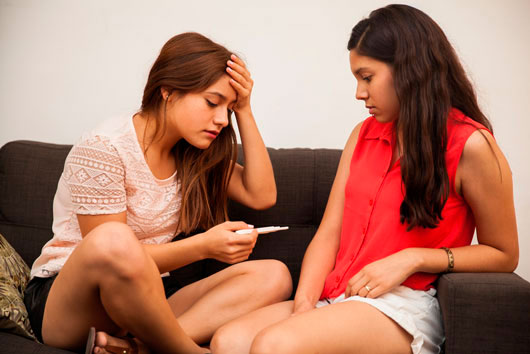I don’t know of anyone who has the chance to travel the world looking for the best place to have a child, but if you could, what would you look for? First on my list would be the best health system for the mother and child during the pregnancy and childbirth, with state-of-the art attention for the new baby. Most of us think there is no better place than the United States to give birth to and raise a child. But is that correct?
“Every night, millions of mothers around the world wish for their children to be safe, happy and healthy. It’s what we all want for our children. And it’s certainly not too much to ask,” says Jasmine Whitbread, CEO of Save the Children International, in the introduction to the organization’s recent report: State of the World’s Mothers 2013. Because no matter where they live, mothers, she reminds us, are fundamentally the same.
Read Related: Latin American Countries Provide Better Maternity Leave Than U.S.
MOTHER AND CHILD WELL-BEING
This report contains an annual ranking of the best and worst places in the world to be a mom, with data from international organizations like United Nations, UNICEF and the World Health Organization, and based on five indicators used to evaluate all countries:
- Lifetime risk of maternal death: This is a measure of maternal health, of the strength of the health system and the availability of quality care.
- Under 5-years mortality rate: This key indicator of children’s well-being, reflects their health and nutritional status, and care received by pregnant mothers.
- Expected years of formal schooling: Education, a basic human right, is strongly linked to lifetime outcomes and prosperity.
- Gross national income per capita: This points to a mother’s access to economic resources and ability to provide for her children.
- Participation of women in national government: The political status of women is directly correlated to sensitivity towards women and children’s issues.
With the report’s criteria in mind, it is hardly unexpected to find the bottom of the list dominated by developing nations in Africa, with Democratic Republic of the Congo coming in last, and countries in South Asia ranking only slightly better. At the top of the list is Finland, followed by other European countries and Australia. But it may come as a surprise that the United States ranks #30, faring worse than Spain at #7, or France, Ireland and Canada (placed 16, 20 and 22 respectively).
Why is the US not among the best-rated countries, as most would expect? It’s ranking is not driven by indicators like educational and economic status and, even though women’s political presence is low. The U.S.’s ranking is due to its poor performance on maternal health and children’s well-being, which lags behind all the other top countries. The statistics certainly are disturbing:
- The risk of dying from a pregnancy-related cause is 1 in 2,400 for mothers in the U.S. That may not seem like a lot, but it is 10 times higher than in Greece or Singapore, according to this report. Only five developed countries perform worse than the U.S. on this indicator: Albania, Latvia, Moldova, Russia and Ukraine.
- The mortality rate of children under 5 years of age is 7.5 for 1,000 live births in the U.S., similar to statistics for Bosnia or Qatar, this data reveals. But even more distressing is the fact that the US has the highest first-day death rate of all industrialized nations.
MAKING STRIDES TO SAVE NEWBORNS
It is estimated that worldwide, more than 1 million babies die on their first day of life every year and approximately 50% of maternal deaths occur within the first 24 hours after birth. The day a baby is born is the most dangerous by far in that child’s life—in rich and poor countries—and one of the most vulnerable for the mother. While this is one of the major findings of the State of the World’s Mothers report, Save the Children insists more extensive use of simple inexpensive treatments could prevent most cases of infant mortality.
In the United States 11,300 babies die each year on the day they are born. This is 50% more first-day deaths than all other industrialized countries combined and not explained by the larger population. Compared to the 27 countries in the European Union, the U.S. has 1 million fewer births each year (4.3 million vs. 5.3 million), but almost double the first-day deaths (11,300 in the U.S. vs. 5,800 in the EU).
In Latin America and the Caribbean, not surprisingly Haiti is the country with the highest first-day mortality rate, 9 babies per 1,000 births, followed closely by Bolivia, where 8 newborns per 1,000 don’t survive their first day of life. The U.S. has a first-day death rate of 3 per 1,000 births, equal to Peru’s, for example, and higher than Argentina, Mexico or Canada, where it is estimated of every 1,000 births, 2 newborns die on their first day of life.
MAJOR RISKS FOR NEWBORNS
If the first day of life is the most dangerous, the first month is very risky for newborns all around the world. Understandably developing countries account for most of newborn deaths and few have seen progress in recent years, but in middle-income nations, including many in Latin America, mortality rates for infants in their first month of life—the newborn period—have been cut by an impressive 50% in the last decade.
Three main causes are behind the great majority of newborns deaths worldwide: preterm birth (before 37 weeks of pregnancy), severe infections and complications during childbirth. Infections and births complications have a greater weight in developing countries, but preterms births are a major cause of newborn deaths in wealthier nations and, again, the U.S. does not fare well on this indicator.
Many babies in the United States are born too early, this report reminds us. The American preterm birth rate—1 in 8 births—is one of the highest in the industrialized world, second only to Cyprus, and double that of Finland, Norway or Sweden, partly as a result of elevated C-section rates. The United States also has the highest adolescent birth rate of any industrialized country and pregnant teens are more likely to have premature and low weight babies.
Recent data from the Centers for Disease Control and Prevention (CDC) confirms that after years with no significant improvements in survival, infant mortality has declined slightly since 2005, due in part to reductions in preterm births. This remains the leading cause of infant mortality, however, and is linked to an estimated 35% of infant deaths.
THE BEST AND THE WORST COUNTRIES
Concerned as we may be that the U.S. is not the safest place to bring a child into the world, mamis in this country can hardly imagine what it is like to be pregnant in Somalia, where 3 out of 4 women receive absolutely no medical attention during their pregnancy. They cannot picture being alone during the delivery of your baby, as are 20% of mothers in Nigeria, with not even a family member present. Or they fail to understand how the birth can take place in the dirtiest area of the home, like in rural India, where the baby is placed on the ground immediately after being born.
How can this inconceivable hardship coexist with the support and protection mothers and their children receive in the best performing countries? Consistently appearing in the top rankings, Northern European countries have long been implementing policies to help families that include:
- Maternity leave: New moms in Sweden enjoy up to 68 weeks of maternity leave, while those in Norway or Denmark are entitled to almost a year off.
- Maternity pay: In most European countries maternity leave is paid, with compensation between 70% and 100% of the mom’s salary.
- Other benefits: Monthly benefits per child in varying amounts and duration for daycare expenses and schooling costs; financial aid for parents who care for their children at home; child-friendly working hours; and last but not least, universal healthcare.












